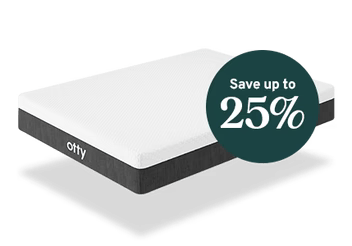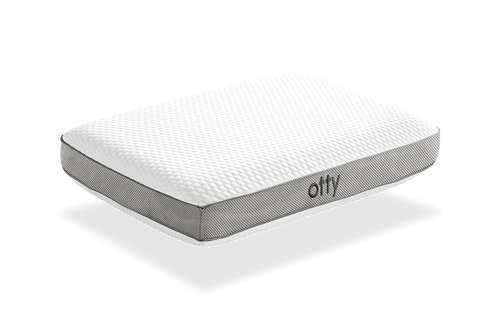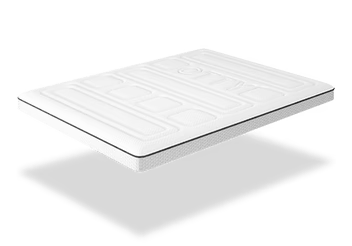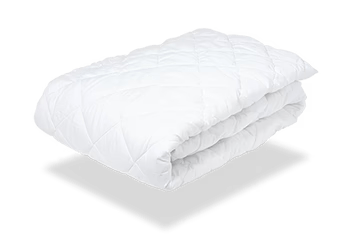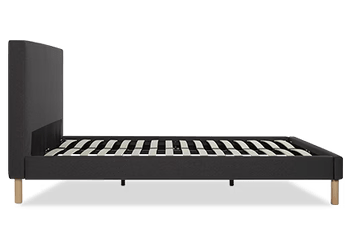The lifespan of a memory foam mattress is influence by many factors, including the quality of materials, your sleeping habits, and even environmental conditions.
In this blog, we'll tell you how long a memory foam mattress should last, providing you with expert recommendations on care and maintenance, and helping you understand how to prolong its lifespan.
How Long Should A Memory Foam Mattress Last?
On average, a good quality memory foam mattress should last between 8 to 10 years
On average, a good quality memory foam mattress should last between 8 to 10 years.
This longevity is one of the reasons why memory foam mattresses have gained significant popularity among consumers.
However, it's important to note that this is an average lifespan.
Some memory foam mattresses may last longer, while others may need replacement sooner. The longevity of a memory foam mattress is not set in stone and can vary based on several factors.
Factors Influencing Memory Foam Mattress Lifespan
Mattress Quality
The quality of a memory foam mattress plays a significant role in its longevity. High-quality mattresses are constructed with superior materials, ensuring a longer lifespan.
Usage
The frequency and manner of use can impact how long a memory foam mattress lasts. For instance, a mattress used every night by an adult will wear out faster than one used occasionally by a child.
Body Weight
Heavier individuals may cause faster wear and tear on a memory foam mattress, reducing its lifespan.
Sleeping Habits
Frequent movement during sleep can strain the mattress, potentially shortening its life.
Environmental Conditions
Factors such as temperature and humidity can affect the longevity of a memory foam mattress. For example, high humidity can lead to moisture build-up, causing premature aging.
Maintenance
Regular cleaning and maintenance are crucial to preserving the integrity of a memory foam mattress. Regular vacuuming and airing can prevent dust mites and moisture build-up, extending the mattress's lifespan.
Signs of a Worn-Out Memory Foam Mattress
The signs of a deteriorating mattress can be subtle, but they are noticeable if you know what to look for. From sagging or indentations to a decrease in comfort and support, these signs can significantly impact your sleep quality.
Sagging or Indentations
One of the most telling signs of an old memory foam mattress reaching its end is the presence of sagging or indentations. This is a clear indication that the foam has lost its resilience and is no longer able to provide the shape and support it once did.
Over time, the comfort and support offered by a memory foam mattress can significantly diminish due to this sagging. This can lead to uneven sleeping surfaces, which can disrupt your sleep and potentially cause discomfort or pain.
Proper care and maintenance, such as regular rotation, can help to prevent this premature sagging and ensure longevity. However, once a permanent indentation has formed, it's usually a sign that it's time to consider replacing your mattress.
Check out our guide to the difference between mattress sagging and indentations
The Impact of Reduced Comfort and Support
The comfort and support provided by a memory foam mattress are among its most lauded features. However, as the mattress ages, these attributes can diminish, impacting your sleep quality.
One of the most telling signs of an old memory foam mattress is the reduced ability to maintain shape and support over time. This is often due to the foam's degradation, which can lead to discomfort and restless nights.
Prolonging the Lifespan of Your Memory Foam Mattress
In our quest for a good night's sleep, the longevity of our memory foam mattress often takes centre stage. The lifespan of your memory foam mattress can be significantly extended with the right care and attention.
Regular Rotation
The importance of regular rotation in prolonging the lifespan of your memory foam mattress cannot be overstated. This simple yet effective practice can significantly extend the life of your mattress, ensuring it remains comfortable and supportive for years to come.
Rotating your mattress every three to six months promotes even wear and tear, preventing the formation of indentations that can compromise the integrity of the mattress. This is particularly crucial for single-sided mattresses, which are more prone to uneven wear.
Our guide on how often you should rotate your mattress provides more guidance on this.
Prevent Moisture Buildup
Preventing moisture buildup is a crucial aspect of prolonging the lifespan of your memory foam mattress. High humidity levels can encourage the growth of mould and mildew, which can degrade the material of your mattress over time. Therefore, it's essential to maintain an optimal level of humidity in your bedroom.
If you find mould has already developed, here's our guide on how to remove mould from your mattress.
Proper Care and Maintenance
Proper care and maintenance play a pivotal role in prolonging the lifespan of your memory foam mattress. It's not just about keeping it clean and free from stains, but also about ensuring it's used and handled correctly.
For instance, avoid sitting on the edge of your mattress as it can weaken the springs and cause premature sagging. Similarly, placing heavy objects or exerting too much weight on your mattress can damage it and reduce its lifespan.
How Body Weight Affects Mattress Lifespan
Body weight plays a pivotal role in determining the lifespan of a memory foam mattress. Heavier individuals exert more pressure on the mattress, causing it to compress and lose its shape faster. This constant compression can lead to premature wear and tear, reducing the mattress's lifespan significantly.
Memory foam mattresses are designed to contour to your body, providing optimal comfort and support. However, excessive weight can strain the material, causing it to lose its ability to bounce back over time.
In general, a memory foam mattress can last up to eight years, but this can vary depending on the individual's body weight. Therefore, it's crucial to consider your weight when investing in a memory foam mattress to ensure it can provide long-lasting comfort and support.
Summary and Key Takeaways
The lifespan of a memory foam mattress is influenced by various factors, including the quality of materials, body weight, sleep habits, and proper care and maintenance.
By understanding these factors, you can make informed decisions about your bedding investments and ensure longevity.
Regular rotation, preventing moisture buildup, and following manufacturer instructions can significantly extend the lifespan of your memory foam mattress.
Investing in a high-quality memory foam mattress can provide you with years of comfort and support.
Lastly, always remember that the key to a long-lasting memory foam mattress lies in its care and maintenance. By taking the necessary steps to care for your mattress, you can enjoy a comfortable and supportive sleep for many years to come.
